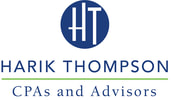|
There are many viable reasons for changing your 401(k) plan provider, including these:
Other reasons may be involuntary — such as your company is undergoing an acquisition or a merger, or your current provider is leaving the retirement plan business.
No matter the cause, moving a 401(k) plan is a complicated process. Below are three key points to cover: 1. Partner with an independent 401(k) consultant. Many 401(k) plan providers have financial advisors and consultants who deliver in-depth guidance to the provider's clients. But when it comes to switching providers, you may want to obtain counsel from an independent expert. The independent consultant can perform an objective assessment of your situation and help you decide whether it's in your best interest to switch. The consultant can also guide you through the transition. 2. Prepare your employees for the change. Employees like to be in the know when it comes to their finances. So be sure to give them as much notice as possible about the change. Explain why you chose the new provider, the plan changes they can expect and when the change will happen. Address any concerns they have regarding the security of their account funds. Give employees a heads-up on their responsibilities. For example, tell them to actively check their accounts via the new provider's system, which you will show them how to navigate. They should ensure their investment lineup is correct and promptly review their new account statements. They should also examine the annual fee disclosure notice so they know what's being charged to their account. 3. Anticipate a blackout period. It takes time for the switch to occur. The time frame depends on how long it will take your old provider to get the records to its successor and the successor's speed in processing and disseminating the necessary information. During this time, employees have limited access to their accounts, hence the term "blackout." Plan sponsors are legally required to give participants a blackout notice, which states the reason for the blackout, when the blackout is expected to begin and end, restrictions on employees' rights during the blackout, and whom to contact with questions about the blackout. Changing a 401(k) plan provider is an incredibly complex process that goes beyond the scope of this article. For example, if you're changing investment providers, the assets will need to be sold. The proceeds will be wired to the new provider and then reinvested. Also, your new provider should work with your payroll team to ensure accurate setup for payroll processing. With the change consisting of so many moving parts, it's essential that you do your due diligence before making the switch. Comments are closed.
|
Newsletter articles are posted every 2 weeks. If you would like to have our e-newsletter delivered directly to your inbox, please sign up. Your information is confidential; you can unsubscribe at any time. Subscribe. Categories
All
|
Proudly powered by Weebly

 RSS Feed
RSS Feed